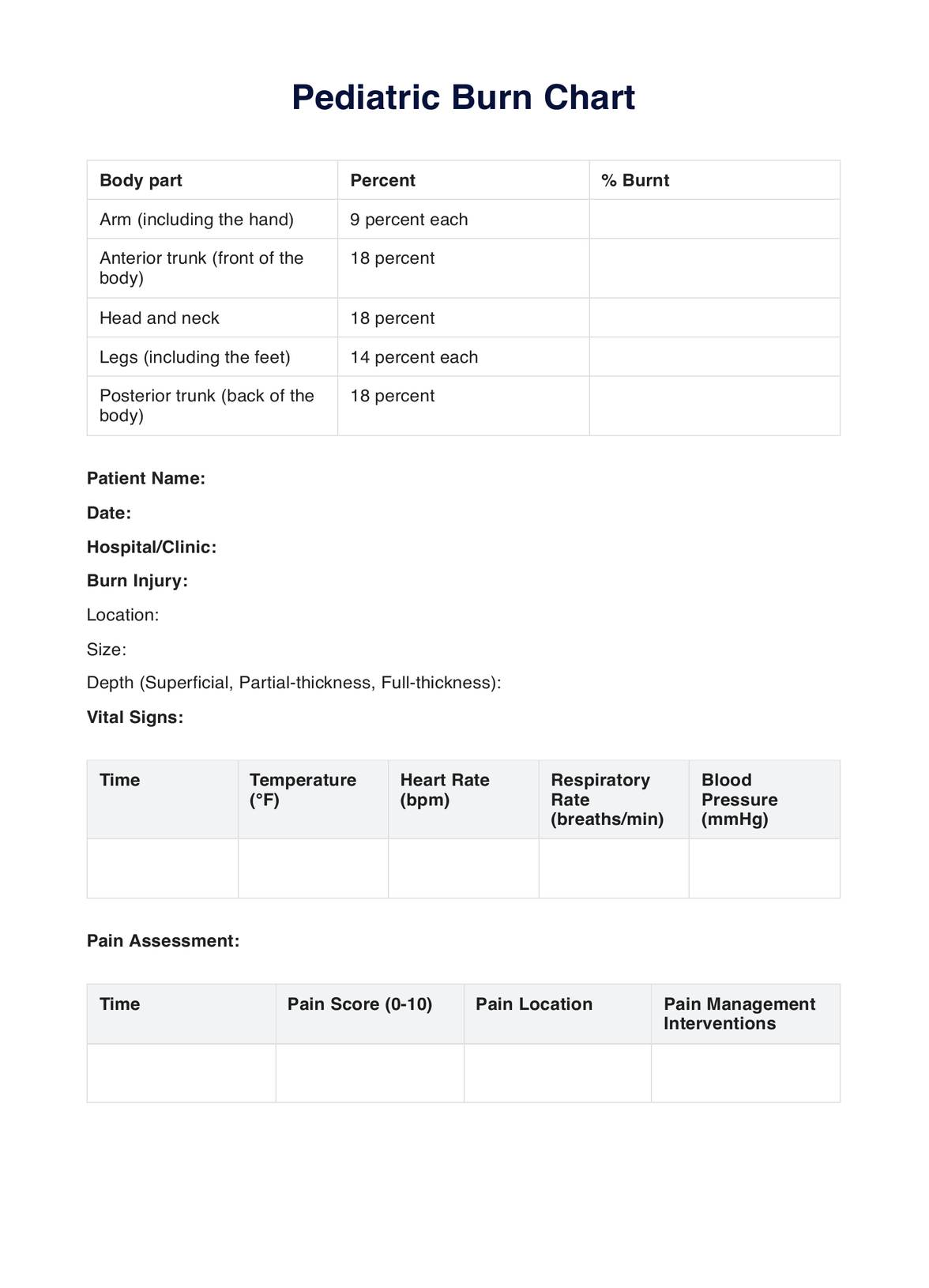Carepatron provides a ready-to-use burn percentage chart which can be printed or used online.

Pediatric Burn Chart
Optimise pediatric burn care with the Pediatric Burn Chart Template, a tool designed to streamline the assessment and management of burns in pediatric patients.
Use Template
Pediatric Burn Chart Template
Commonly asked questions
During acute care (e.g., emergency departments, burn units) and outpatient care (e.g., burn clinics, pediatric clinics) for burn assessment, treatment monitoring, and communication.
To document vital signs, pain levels, wound healing, medication administration, fluid intake/output, and other observations for informed care decisions.
EHR and practice management software
Get started for free
*No credit card required
Free
$0/usd
Unlimited clients
Telehealth
1GB of storage
Client portal text
Automated billing and online payments











